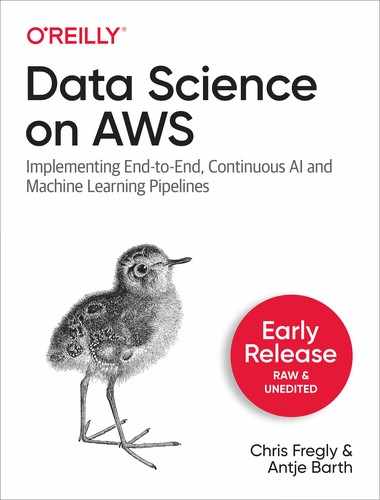Book Description
If you use data to make critical business decisions, this book is for you. Whether you’re a data analyst, research scientist, data engineer, ML engineer, data scientist, application developer, or systems developer, this guide helps you broaden your understanding of the modern data science stack, create your own machine learning pipelines, and deploy them to applications at production scale.
The AWS data science stack unifies data science, data engineering, and application development to help you level up your skills beyond your current role. Authors Antje Barth and Chris Fregly show you how to build your own ML pipelines from existing APIs, submit them to the cloud, and integrate results into your application in minutes instead of days.
- Innovate quickly and save money with AWS’s on-demand, serverless, and cloud-managed services
- Implement open source technologies such as Kubeflow, Kubernetes, TensorFlow, and Apache Spark on AWS
- Build and deploy an end-to-end, continuous ML pipeline with the AWS data science stack
- Perform advanced analytics on at-rest and streaming data with AWS and Spark
- Integrate streaming data into your ML pipeline for continuous delivery of ML models using AWS and Apache Kafka
Table of Contents
- 1. Ingesting Data Into The Cloud
- 2. Exploring the Dataset
- 3. Preparing the Dataset for Model Training
- 4. Training Your First Model with SageMaker
- Understand the SageMaker Infrastructure
- Develop a SageMaker Model
- A Brief History of Natural Language Processing
- Training BERT from Scratch
- Use Pre-Trained BERT Models
- Create the Training Script
- Launch the Script from a SageMaker Notebook
- Evaluate Model Training
- Debug Model Training with SageMaker Debugger
- Increase Performance and Reduce Costs
- Summary
- 5. Training and Optimizing Models at Scale
- 6. Deploying Models to Production with SageMaker
- Collaborating with Multiple Teams
- Choose Level Of Customization
- Choose Real-Time or Batch Predictions
- Real-Time Predictions with SageMaker Endpoints
- Creating Inference Pipelines
- Deploying New Models
- Testing and Comparing New Models
- Auto-Scale SageMaker Endpoints using CloudWatch
- Monitor Predictions and Detect Drift
- Perform Batch Predictions with SageMaker Batch Transform
- Lambda Functions and API Gateway
- Reduce Costs and Increase Performance
- Summary
